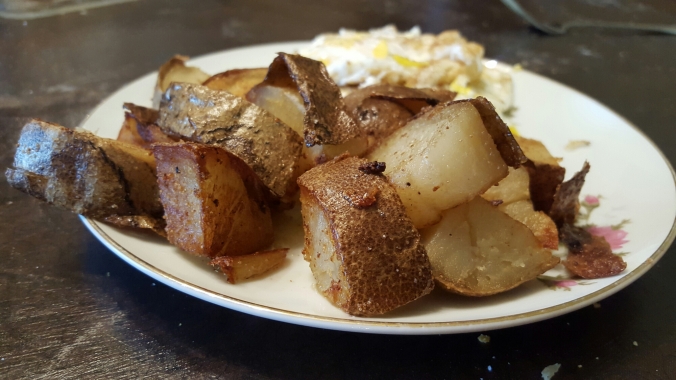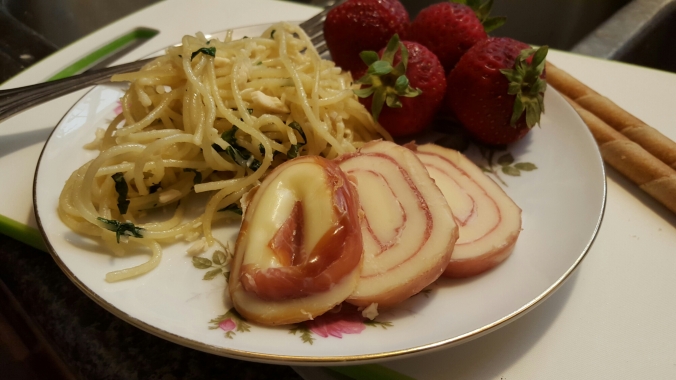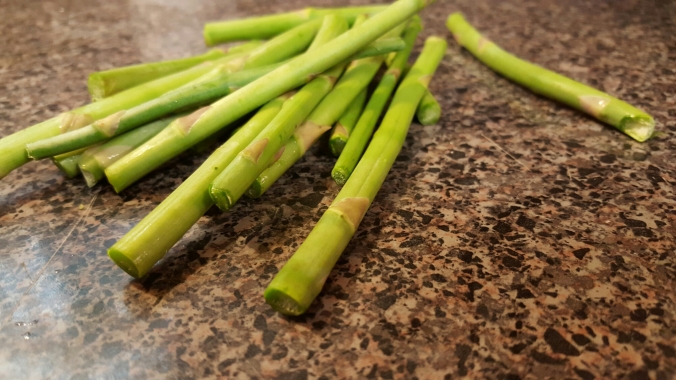I don’t often make a stew in the middle of summer, but sometimes I start adding ingredients and change gears in the middle of my roasting pan. This one-pan stew, for instance, started out as a pork roast and morphed into stew before it even went into the oven.
For me, that’s what truly inspired cooking is about: flexibility and feeling. It becomes an art form, with food as your medium. In fact, the layers upon layers of flavor, color, texture and smell easily shift about, creating a vast interplay of masterpieces waiting to emerge. Just as the slightest shift in metre changes the entire tone of a sonatina, so does the smallest change in your recipe create an entirely new feeling. Something as simple as cutting your vegetables into different sizes or shapes can alter the final product, both subtle and in more pronounced ways.
I started with a five pound half-loin of pork. You could easily divide this recipe in half using a tenderloin, but be prepared to adjust cooking times accordingly.
So, this lovely bit of meat lies lonely in my roasting pan, and I think, “what shall we season with today?” Originally I was thinking of roast, gravy, and rice, so I slivered an onion and cut a tomato into sizeable wedges and covered the meat up with said vegetation.
It was lovely, but I had some fresh poblanos in the fridge just waiting for a chance to sing. So out they came, and once thinly sliced they leapt across the surface of my roast.
“Hmm. Pork, onion, tomato, chilé…this sounds like a brilliant base for a Mexican pork stew!” My two cans of organic corn poured out with abandon, liberally seasoned with garlic and cumin powders. I dashed everything over with salt but wisely withheld the creole seasoning. Small children do not hold the same love for a sweating blaze of heat as adults do, and pepper sauce passed at the table can be added to taste. A snowfall of fresh basil graces the top, but freshly chopped oregano or cilantro would also yield fantastic results.

A fiesta of color; you barely suspect that there is pork tucked under that blanket of vegetation.
Side note: I poured in the canning liquid along with the corn, as pork loin tends to dry when cooked over long periods. You could substitute water or broth, about a pint, if you use fresh or frozen corn or want to control your sodium sources.
I covered the roaster with its glass lid, and baked it at 300°F for about three hours. I removed the pan from the oven and used a meat fork to tear the roast into smaller chunks, being sure to submerge everything into the lovely broth. I returned the pan, covered, to the oven where it baked for another hour until tender.
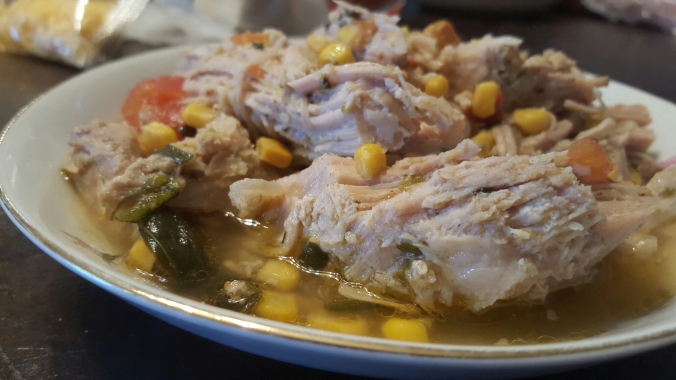
Lovely, right? Pass sour cream, salt, pepper sauce and shredded cheese at the table.
This ladled up into shallow bowls and served about 7, allowing a little leftovers.
You knew there would be leftovers, didn’t you? Sing me a song of leftovers. I used to wail over leftovers, until I learnt well the trick of disguising them as ingredients.
After my husband took a man-sized portion to work for lunch, I stirred the leavings into a panful of kidney beans. This I seasoned with sautéed onion slivers, a handful of blistered cherry peppers from the freezer, and a healthy dollop of bacon drippings.
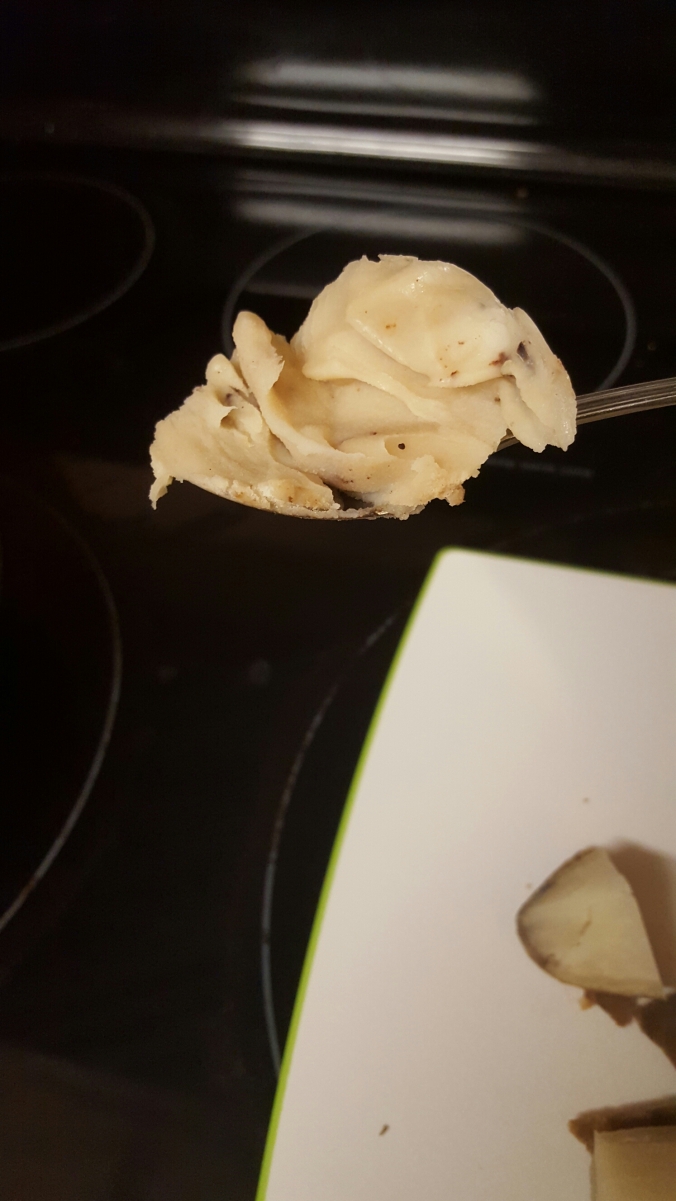
Like all southern women before me, I dutifully collect the unseasoned grease from my smoked bacon in a metal coffee can. Breaking with tradition, I store it in the fridge to prevent rancidity.
Those red beans became a second, entirely different stew. I cheated and crumbled a slice of jalapeño-jack cheese into my dish and stirred – heavenly.

No one minds leftovers if they don't know they're there. I find the same works with spinach, but that is for another time.
So truly, this is the story of two stews.
Oh, and in the spirit of full disclosure, things are rarely cooked three times in my house. Twice is usually plenty to “lick the platter clean,” and anything left after that means my Bassett hound eats like a prince for a day.





